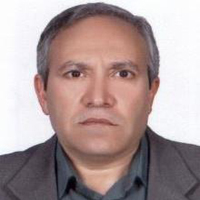Effect of Planting Time and Seedbed on Growth and Phenology of Scrophularia striata
Author(s):
Article Type:
Research/Original Article (دارای رتبه معتبر)
Abstract:
Introduction
Scrophularia striata is an originally Iranian wild perennial plant. This plant has many medicinal properties including treatment of some diseases like cold, digestive disorders, inflammation and infection. Although S. striata has been reported from various regions of the country with different climatic conditions, however there is no information about phenological growth, suitable time and seedbed of S. striata. There are variety of environmental factors that affect phenology growth. Among them temperature is considered as the most effective one. To generalize prediction of phenological growth in different locations, standard measurement is required. Growth degree day (GDD) or thermal time can be a consistent predictor of phenology development in contrasting climates. Determining required thermal time for plant phenological development would provide information for decision making on the time of management practices including planting date, timely irrigation and efficient pest and weed management. To the best of our knowledge there is no information about plant establishment, growth and phenological stages of S. striata. Because of its high demands for medicinal products, information about the S. striata cultivation is necessary. Therefore the objective of this study was to determining the effect of planting time and seedbed on phenological growth.
Materials and Methods
Field experiment was conducted in experimental farm of agricultural and natural resources college, university of Tehran, Karaj during 2016-2017. Seeds were preconditioned at temperature of 3ºc for one week to break dormancy. For seedling establishment, seeds were transferred to the greenhouse and cultivated in three different seedbeds. Seedlings were transferred to the farm at stages of four to six leaves. The experiment was a split plot with three replications. Planting dates comprised Early June (D1), September (D2), October (D3) and November (D4) of 2016 and Early March (D5) of 2017 were the main plots and seed beds of peat moss, peat moss+ perlite (1:1) and coco peat+ peat moss+ perlite (2:1:1) were the sub plots. Growth Degree Days (GDD) for phenological stages of S.striata including first and second node, flowering, capsule formation, seed formation and maturity were calculated. Data were subjected to ANOVA using SAS 9.1, and standard error of means was calculated.
Results and Discussion
Results showed significant main effects and interactions between seed bed and planting date at 1% probability level on phenological growth of S. striata. Peat moss seed bed with June planting had lowest GDD to first node (39.5 GDD), second node (50.1 GDD), flowering (307.4 GDD), capsule formation (610.8 GDD), seed formation (697.8 GDD) and maturity (1242.0 GDD). With delay in planting time to September, October and November, GDD requirements for phenological growth increased. Between our planting dates, June planting time was the most suitable time for planting. Changes in temperature, day light and precipitation are significant in successful plant establishment and growth. Our results showed that there is a critical time for planting S. striata in farm. Very early planting like March planting time was not good and plants did not enter the reproductive stage. Plants of June planting time were entered flowering stage on April 15 in the next year. With delay in planting time to November, plants entered flowering stage on May 10 in the next year. High organic matters percentage and capacity of cation exchange provides increasing potential for water absorption and keeping nourishing elements and water for a longer time. This causes improved conditions for root growth. In addition, vermicompost and peat moss includes regulator hormones such as humic acid that benefits early growth of plant.
Conclusions
To conclude, 1) peat moss was recognized as a successful bed for initial growing of S. striata. To the best of our knowledge, no practical recommendation was formerly provided on the subject. 2) June planting time was determine as the best time for plant establishment that led to acceleration in flowering time and more seed production.Keywords:
Language:
Persian
Published:
Iranian Journal of Field Crops Research, Volume:17 Issue: 2, 2019
Pages:
255 to 264
https://magiran.com/p1992649
سامانه نویسندگان
مقالات دیگری از این نویسنده (گان)
-
Comparison of the efficiency of polyethylene mulch and herbicides in controlling Bermuda grass (Cynodon dactylon L.) in vineyards
Mansor Sarani *, , Batoul Samedani
Iranian Journal of Weed Science, -
Evaluation of Energy and Environmental Indices with a Life Cycle Approach for the Production of Corn (Grain and Silage): A Case Study in Alborz Province
Nima Shahbazi, *, Mohammadreza Jahansouz
Iranian Journal of Field Crop Science, -
Evaluation of intercropping buckwheat and cowpea in improving yield and weed control under deficit irrigation conditions
Kiavash Arvin, Seyed Mohammadbagher Hoseini *, , Ahmad Ashouri, Hamed Ebrahimian Taleshi
Electronic Journal of Crop Production, -
Quantifying seed germination response of Kochia (Kochia scoparia) to varying temperatures and osmotic stress due to salinity
Ramin Piri, Farzad Sharifzadeh*, Naser Majnounhosseini
Iranian Journal of Seed Research, -
Quantification of the rapeseed cultivars germination using hydrothermal time model
Taraneh Samarzadeh Vajdefar, *, AmirHossein Shirani Rad, MohammadHossein Naeimi
Iranian Journal of Field Crop Science, -
Effect of chilling time and gibberellic acid treatments on germination thermal parameters of Eryngium caeruleum
Mohammad Lotfi, *, Hamid Rahimian Mashhadi, Behnaz Pourmorad Kaleibar,
Iranian Journal of Field Crop Science,





